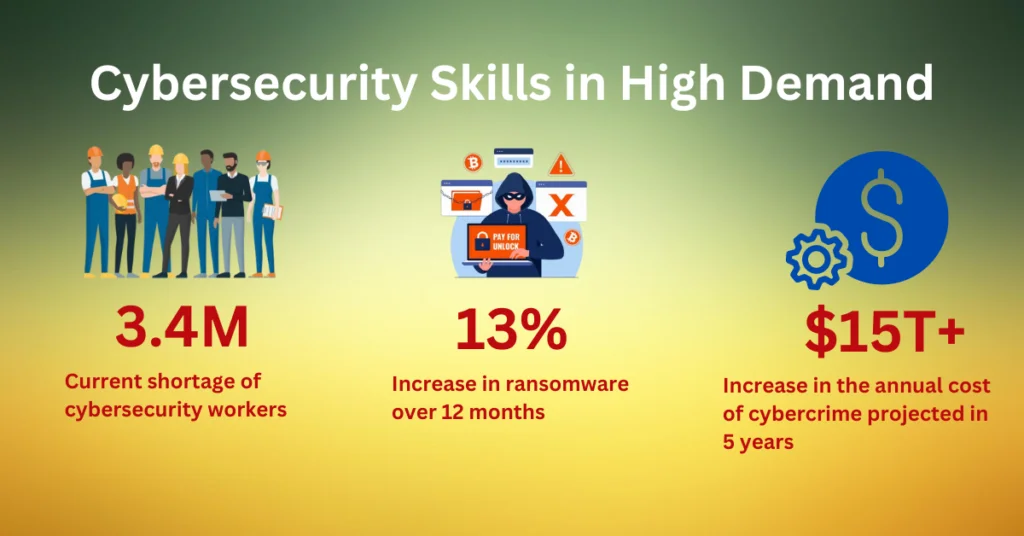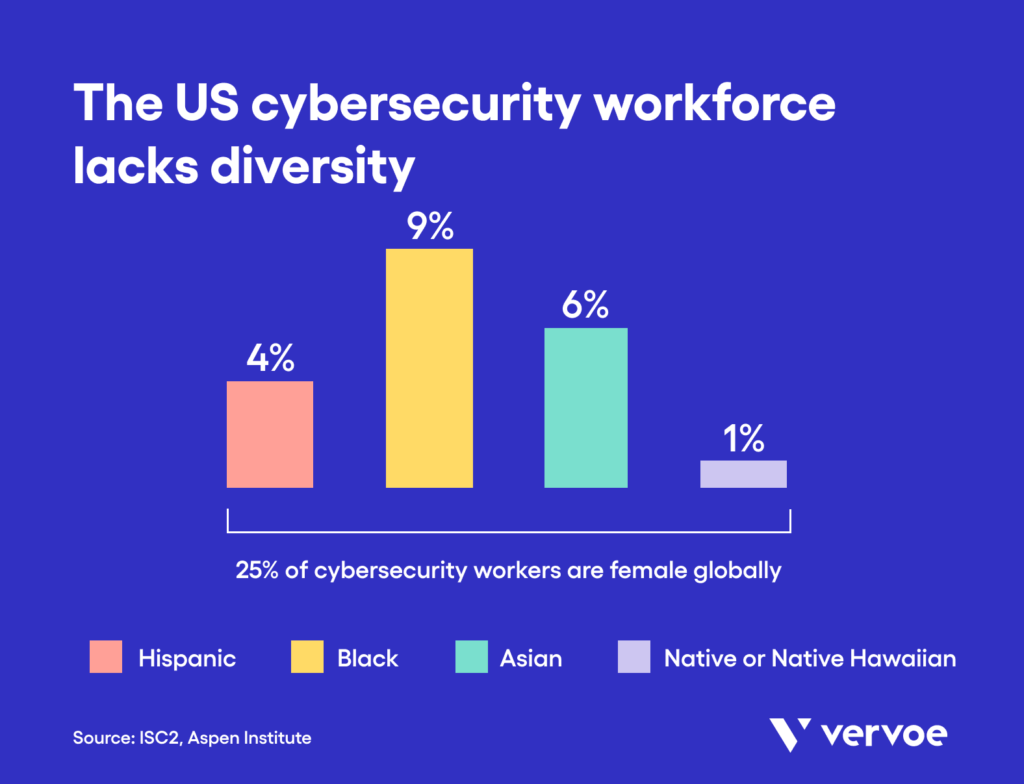
The ever-evolving threat landscape of cybersecurity has created an unprecedented demand for skilled professionals. However, the global cybersecurity talent crisis continues to deepen, leaving organizations vulnerable to attacks. With millions of unfilled positions worldwide, the expertise gap in cybersecurity has become one of the most pressing challenges for businesses and governments. Bridging this gap is essential to safeguard digital infrastructures in an increasingly interconnected world.
The Cybersecurity Talent Crisis in Numbers

The scope of the cybersecurity talent crisis is staggering:
- Job Openings: Over 3.5 million cybersecurity positions are expected to remain unfilled in 2025, according to industry reports.
- Skills Shortage: 70% of organizations report difficulty in hiring qualified cybersecurity talent.
- Economic Impact: Cybercrime is projected to cost the global economy $10.5 trillion annually by 2025, underscoring the urgency of addressing the talent gap.
These statistics highlight the growing disparity between the demand for expertise and the available talent pool.
What Is Causing the Cybersecurity Talent Gap?

The cybersecurity talent shortage is fueled by a combination of factors:
- Rapid Technological Advancement: Emerging technologies like AI, IoT, and cloud computing require specialized security knowledge that is still evolving.
- Increasing Threat Complexity: Sophisticated attacks, such as ransomware and state-sponsored campaigns, demand highly skilled professionals.
- Limited Educational Pathways: Traditional academic programs often lag behind industry needs, leaving graduates underprepared for real-world challenges.
- Burnout and Attrition: High stress, heavy workloads, and the pressure of defending against relentless cyberattacks lead to burnout and turnover among cybersecurity professionals.
The Consequences of the Expertise Gap
The lack of cybersecurity expertise has far-reaching implications for organizations and society at large:
- Increased Vulnerability: Organizations with insufficient security staff are more likely to suffer data breaches and cyberattacks.
- Higher Costs: A shortage of skilled professionals drives up salaries and reliance on external consultants, straining budgets.
- Regulatory Non-Compliance: Without adequate expertise, organizations struggle to meet compliance standards, exposing themselves to fines and reputational damage.
- Innovation Slowdown: A lack of talent impedes the development and deployment of new, secure technologies.
Strategies for Bridging the Cybersecurity Talent Gap
To address the growing cybersecurity talent crisis, a multi-faceted approach is necessary.

- Upskilling and Reskilling Existing Employees:
Organizations can invest in continuous training to upskill current employees, enabling them to transition into cybersecurity roles. Certifications like CISSP, CEH, and CompTIA Security+ can provide the necessary credentials. - Integrating Cybersecurity into Education:
- Universities and schools should align curriculums with industry needs, offering specialized degrees and practical training.
- Early introduction of cybersecurity concepts in primary and secondary education can spark interest in the field.
- Encouraging Diversity and Inclusion:
- Women and underrepresented groups remain a largely untapped talent pool. Initiatives aimed at improving diversity can widen the talent base.
- Programs like Girls Who Code and Women in Cybersecurity (WiCyS) provide valuable pathways into the field.
- Leveraging Automation and AI:
Advanced tools and automation can reduce the workload on human professionals, allowing them to focus on higher-level tasks while addressing the skills shortage. - Building Public-Private Partnerships:
Collaboration between governments, educational institutions, and private companies can foster workforce development programs and create standardized training opportunities.
Global Efforts to Mitigate the Crisis

Several regions are taking innovative steps to address the cybersecurity talent gap:
- United States: The CyberCorps® Scholarship for Service program provides financial support to students pursuing cybersecurity careers in exchange for government service.
- European Union: Initiatives like ENISA’s Cybersecurity Skills Framework aim to harmonize education and certification standards across member states.
- Asia-Pacific: Countries like Singapore are investing in upskilling initiatives through programs like Cybersecurity Associates and Technologists (CSAT).
Emerging Trends in Cybersecurity Workforce Development

The future of cybersecurity talent development hinges on several key trends:
- Gamification in Training: Interactive simulations and cyber ranges allow trainees to engage in real-world attack scenarios, enhancing practical skills.
- Remote Work Opportunities: The rise of remote work opens global talent pools, enabling organizations to recruit beyond geographical limitations.
- Micro-Credentials: Short, focused certifications offer a quicker route to skill acquisition than traditional degree programs.
- Cybersecurity Apprenticeships: On-the-job training models are gaining traction, bridging the gap between education and experience.
The cybersecurity talent crisis is a formidable challenge, but it also presents an opportunity to rethink how we approach workforce development. By fostering a culture of continuous learning, embracing diversity, and leveraging technology, we can bridge the expertise gap and create a robust pipeline of cybersecurity professionals.
As threats grow in scale and sophistication, the responsibility to address this talent shortage falls on organizations, governments, and educational institutions alike. Together, we can build a safer, more secure digital future.
FAQs
Why is there a cybersecurity talent crisis?
The crisis stems from rapid technological advancements, increasing threat complexity, and a lack of adequate educational and training pathways.
What are the consequences of the cybersecurity expertise gap?
Organizations face heightened vulnerability, increased costs, regulatory non-compliance, and slower innovation due to the talent shortage.
How can we encourage more people to enter cybersecurity?
Integrating cybersecurity into education, promoting diversity, and offering flexible training options can attract more talent to the field.
What role does automation play in addressing the cybersecurity talent gap?
Automation reduces the burden on human professionals by handling repetitive tasks, allowing them to focus on complex security challenges.
Are there global efforts to address the talent shortage?
Yes, initiatives like the U.S. CyberCorps® program and ENISA’s skills framework in the EU aim to cultivate a skilled cybersecurity workforce.
Can non-technical professionals transition into cybersecurity roles?
Absolutely. Many organizations provide reskilling opportunities for professionals with transferable skills, such as problem-solving and risk management.



